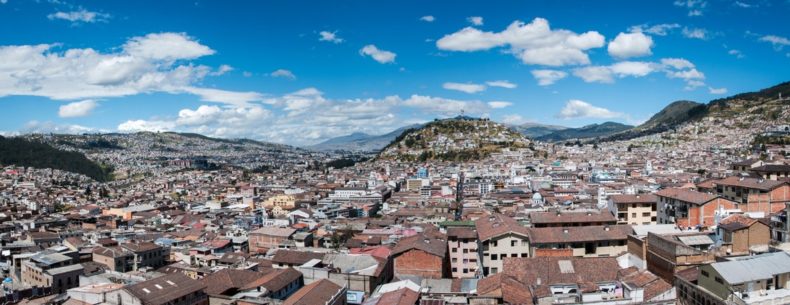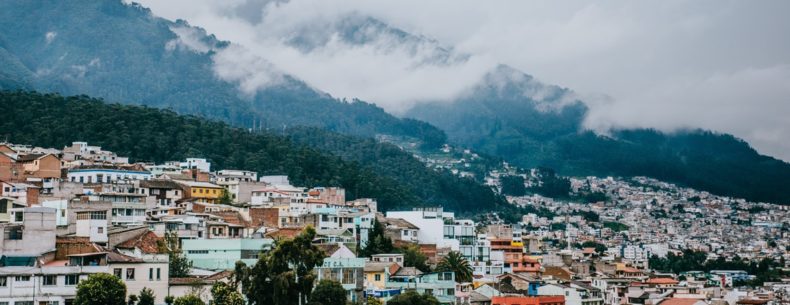2020 Updated Information about the climate and the weather in Quito, Ecuador. From how the altitude affects the rains to the best time to visit.
Weather can be unpredictable, especially in places located at high altitudes such as Quito, Ecuador. High in the Andes Mountain range, Quito is home to one of the two international airports in Ecuador. This modern capital city sits 9,350ft (2,850 meters) above sea level and the weather at this altitude can always change rather quickly.
Usually, the weather is a concern for anyone who is planning a trip to Ecuador. When planning a trip to visit Quito, you should remember two important points. One is that due to the city’s high elevation, early morning and late evenings can get quite cool. Secondly, Quito is not very far from the equator, meaning days will be a bit warmer, there’s more humidity, and also more hours of daylight.

Quito is located at over a mile high in elevation above sea level. In addition to the extreme altitude, it also sits surrounded by mountains. Due to this combination of high elevation and nearby mountains, the weather can change dramatically at any second. It’s not uncommon for a thunderstorm to develop unexpectedly out of nowhere.
Just like most places in the world, there’s a wet and a dry season in Quito, Ecuador and depending on when you visit you can expect a different experience.
Due to the closeness of Quito to the equator, the temperature throughout the year is very temperate and varies very little. Rarely does the temperature extend far beyond 70°f Generally, the average high sits at around 65°F the entire year.
As for the average low temperature that you’d experience throughout the year, it gets down to around 48°F. So you definitely won’t have to worry about freezing if you plan on visiting in the winter.
In Quito, the chance that you will experience rain and how much of it varies significantly throughout both the wet and dry season. A typical wet day involves at least 0.04 in of rain. You can expect the most days of rain in April and the least around July and August. At the height of the wet season in April, a rainy day on can drop an average of 6.4 inches of rain.

During the dry season, you can obviously expect fewer rainy days, however, you may not escape them fully. The end of July is the least likely to have a wet day, however, there is still an 11% chance. On the other hand, during the wet season in April, you have over 70% chance of rain pretty much the entire month.
Although the weather in Quito varies very little there are still better days than others to visit. To avoid rain and the chances of wet weather consider visiting from June through to September.
On the off chance you enjoy the rain, the wet season runs from October to May, with March and April with the heaviest rain. And although the temperature throughout the year doesn’t really change much, the humidity levels and amount of rain do.
Quito, Ecuador is a beautiful city full of culture and charm. Although you can expect mild temperatures when you visit and explore the city, don’t forget your umbrella. If you need a little inspiration, check out our blog about the best things to do in Quito!
